DP Kasper Tuxen DFF harnessed KODAK film to depict the purity of human connection in Joachim Trier's award-winning 'Sentimental Value'
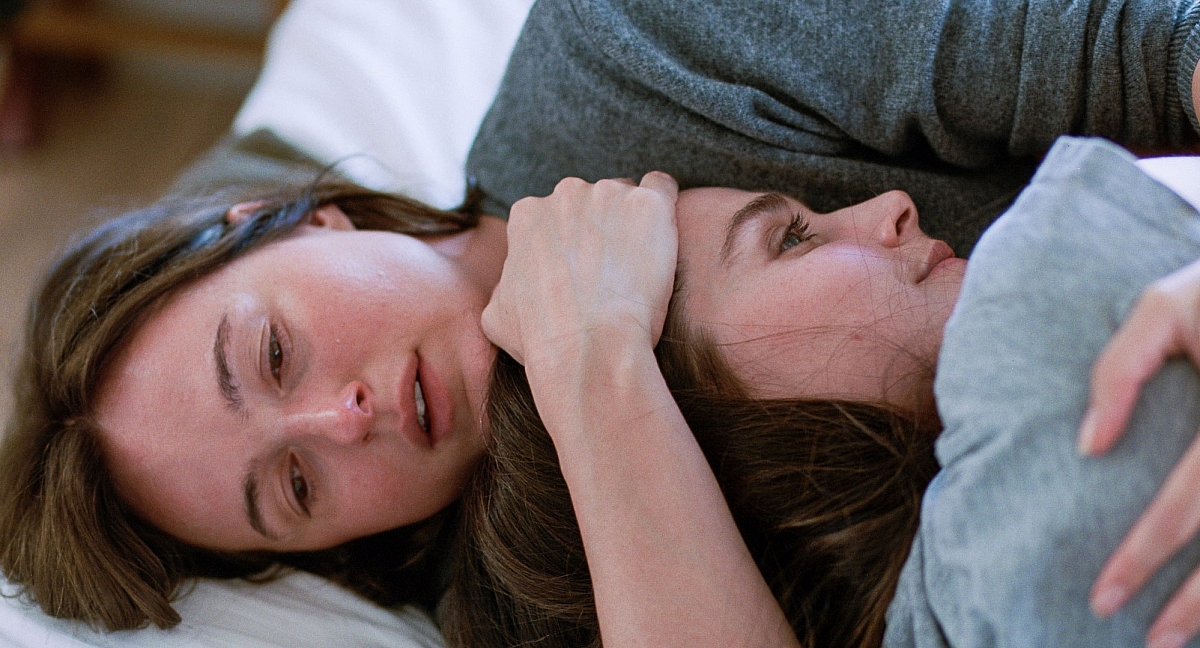
Renate Reinsve (Nora) and Inga Ibsdotter Lilleaas (Agnes) in Joachim Trier's SENTIMENTAL VALUE. Photo courtesy of Kasper Tuxen DFF.
Danish DP Kasper Tuxen DFF harnessed 35mm plus 16mm KODAK film to capture director Joachim Trier's award-winning and highly acclaimed, Sentimental Value (Affeksjonsverdi), a contemporary tragicomic story about human connection that is laced with resonances from the past.
Set mainly in modern-day Oslo, but also featuring poignant historical flashbacks, sisters Nora and Agnes Borg are forced to confront their estranged father Gustav, a once-famous but now largely forgotten film director, when he shows-up unexpectedly at their late mother's funeral wake in the family home.
Despite having abandoned his daughters when they were children, and still barely able to communicate with them, Gustav offers Nora, a successful stage actress who struggles with stage fright, the lead role in what he hopes will be his comeback movie. And, he wants to shoot in the house where Nora and Agnes grew-up, a place with memories of its own. But, when Nora flatly turns him down, Gustav gives the part to Rachel Kemp, a Hollywood star with the necessary financial resources to make his movie, and the sisters find themselves dealing with complicated emotional wounds from both past and present.
The film, a European co-production including Norway, France, Germany, Denmark and Sweden, was co-written by Trier and Eskil Vogt, and stars Renate Reinsve and Inga Ibsdotter Lilleaas as Nora and Agnes, Stellan Skarsgård as Gustav, alongside Elle Fanning as Rachel Kemp.
It won the Grand Prix at the 2025 Cannes Film Festival, and received widespread praise for its bittersweet, multi-layered portrayal of fractured family relationships, resentment and reconciliation. It has also been selected as Norway's entry for Best International Feature Film at the 2026 Academy Awards.
Sentimental Value represents the second collaboration between Tuxen and Trier after their work together on the multi-award-winning The Worst Person in the World (2021), which was also shot on 35mm KODAK film.
"Joachim first told me about Sentimental Value in the summer of 2022, and gave me an initial outline about it being a contemporary family story steeped in generational history," says Tuxen. "As happenstance would have it, I had just started shooting a personal project – a documentary about my own parents, our family home and their lives, shooting on analog film. So, I found Joachim's idea particularly inspiring, and we were in-sync right from the start.
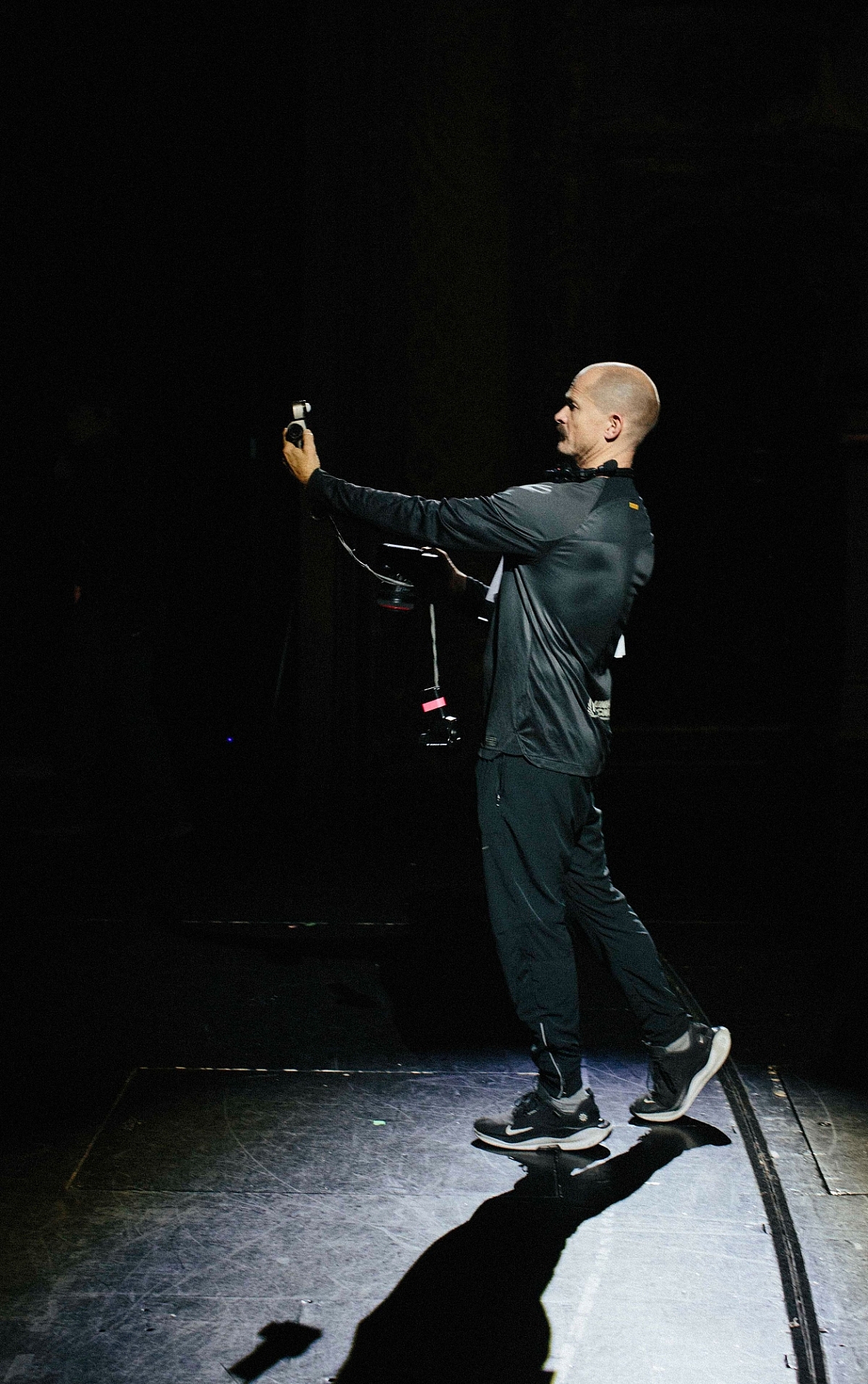
DP Kasper Tuxen DFF taking a light reading during production on Joachim Trier's SENTIMENTAL VALUE. Photo by Christian Belgaux.
"This meant that long with the portraiture of the actors, the geography of the house was of huge importance from a cinematographic perspective, so as to help the audience understand the hallways and rooms during the different seasons and decades that would be depicted in the story."
Tuxen reports a lengthy prep of some eight months. During this time, he took the opportunity to bring back the bicycle he had previously bought in Oslo prior to shooting The Worst Person in the World, and tour the chosen locations, including the family house, so as to observe the fluctuations of the natural light.
"I knew from my previous experience in Oslo that continuity was going to be difficult, so it was really important to re-acquaint myself with how the sunlight varies during the day, especially during the summer months, and to understand how I would need to manage the natural illumination coming into the house from multiple windows, as a lot of the movie was going to be shot there."
During this period, Tuxen says he also watched a lot of films by renowned auteur directors – including Michelangelo Antonioni and Andrei Tarkovski – in order to "enter an emotional space that would be in-tune with the work ahead and the performances of the actors."
Revealing more specific references, he says, "Joachim and I absorbed The Age of Innocence (1993, dir. Martin Scorsese, DP Michael Ballhaus ASC) for its camera movement and depictions of the passage of time, plus Opening Night (1977, dir. John Cassavetes, DP Alan Raban) for its visualization of an actress struggling with a nervous breakdown. We also considered films by Woody Allen, specifically those shot by DP Gordon Willis ASC, as inspirations for the moods in different scenes."
Principal photography on Sentimental Value commenced in August 2024 and concluded some 63 shooting days later in November. Along with Oslo and the family home, production included a stint in Deauville, France, that coincided with the Deauville American Film Festival, to film the scenes in which Gustav meets Rachel Kemp, plus a week in Sweden to film the interior scenes in Nora's apartment. To ease the constant need to redress the house according to the different scenes and time periods covered in the film, an exact replica was built at Gateway Studios, in Drammen, an hour's drive from Oslo, with LED walls being used to provide the appropriate backdrops.
In keeping with the desire to echo the visual style of The Worst Person in the World, Tuxen went with the same combination of aspect ratio, camera, lenses and filmstocks, but with some key additions. The shooting package was supplied by Storyline Studios in Oslo, where the final grade was also later performed by freelance colorist Julian Alary.
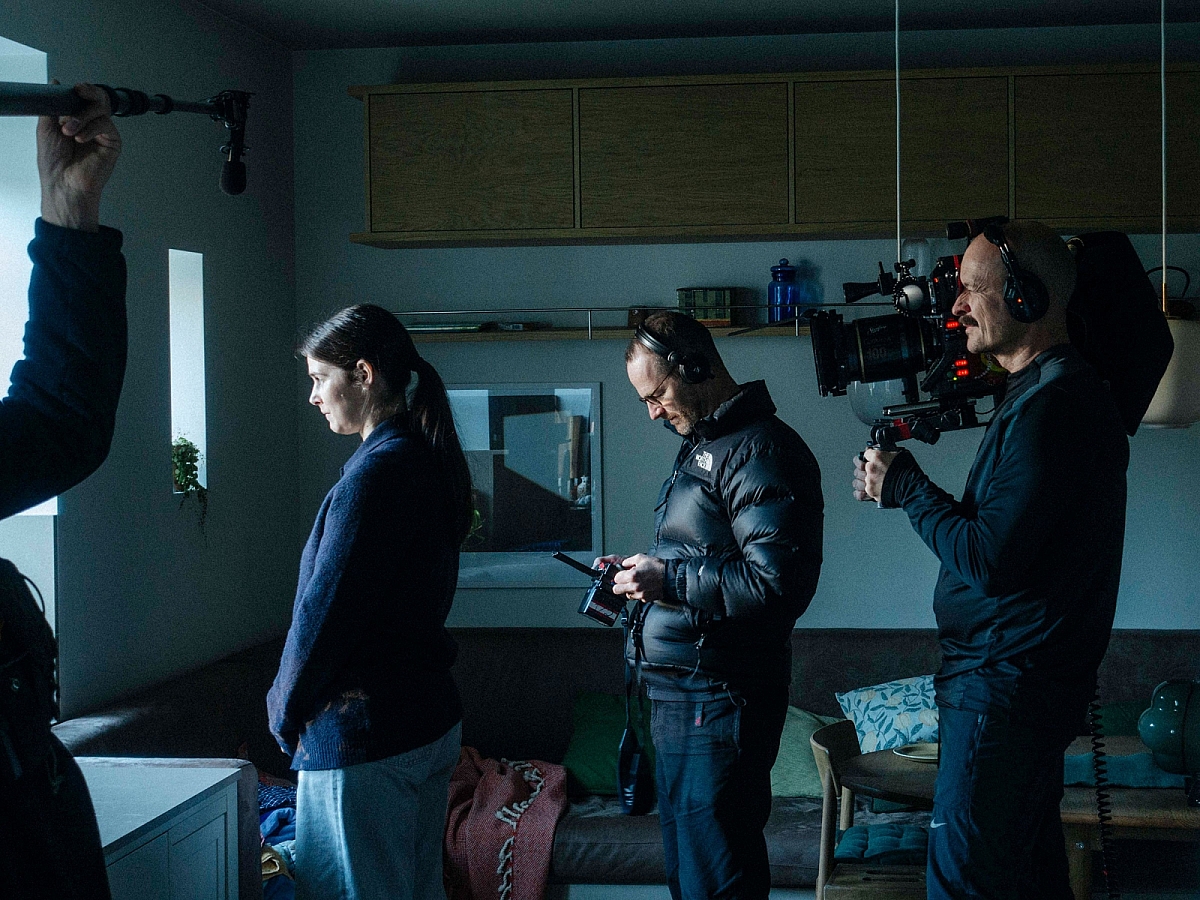
DP Kasper Tuxen DFF with director Joachim Trier, filming actress Inga Ibsdotter Lilleaas in SENTIMENTAL VALUE. Photo by Christian Belgaux.
"All of Joachim's films have been shot in 1.85:1, which is wonderful for portraiture and gives you the ability to reframe the picture in post if necessary,” Tuxen explains. “I chose the ARRICAM LT 35mm camera again, because Joachim and I believe it to be the perfect machine for 35mm filmmaking. For the contemporary part of the film, I went with the Cooke 5/i's once again, because of the appealing softness they give to the image, especially on close-ups.”
"However, to help differentiation in the visual storytelling, I decided to shoot the excerpt from Gustav's film using vintage Cooke Varotal zooms with bleach bypass on the negative at the lab, and used Super Baltars for the some of the historical flash backs. To delineate things still further I shot the flashbacks set in the 1920s and '30s on an ARRIFLEX 416 16mm camera with an old 16mm T1.8 16-40mm zoom."
As for the filmstocks, Tuxen selected the same combination of KODAK VISION3 250D Color Negative Film 5207 for most of the day exteriors and brighter day interiors, plus KODAK VISION3 500T Color Negative Vilm 5219 for the film's low-light/night interior and exterior scenes. He also shot bright summertime exterior scenes in Oslo on KODAK VISION3 50D 5203. Film processing, which often involved push-processing to subtly boost the colours, and 2K scans, were done at Cinelab, London.
"There was never any doubt that we'd shoot analog as Joachim loves film, and it was stipulated in his contract anyway,” says Tuxen, who gave the camera a personality of its own for the cast and the crew, by having it emblazoned with the famous psychedelic design that George Harrison used on his Stratocaster guitar.
"Faces and portraiture were a big element in this movie, and Joachim and I both believe that nothing renders skin better than film. Amongst one of Renate's many qualities is the way her cheeks blush or her eyes redden, and the 250D and 500T captured that just perfectly.
"One of the other great properties of film is the way it deals with highlights – the way they burn-out is just beautiful. With digital it's almost a forgotten vocabulary to shoot high-key scenes, because the picture can fall apart and you lose definition. But we love how the blooming effect looks on film. During our test period, we compared 2K and 4K scans and decided that the slightly softer look you get with 2K, especially on close-ups and skin, looked best on the big screen."
Tuxen admits to some trepidation prior to filming the house interiors at Gateway Studios using LED walls as backdrops.
"It's an expensive technology that also requires you to iron-out technical issues like flicker, as well as the colour balance between the LED panels and the on-set lighting. We made the appropriate backdrops for each time period, the '20s, '40s, '60s and '80s, and lit the scenes according to the season and time of day. I have to say that shooting LED screens on analog film works really, really well. Film grain does a whole lot to make the pixels invisible, and the results looked great. So we shot everything on-stage with LED screens, except for the final scene, where we replaced the LED walls with traditional bluescreen.”
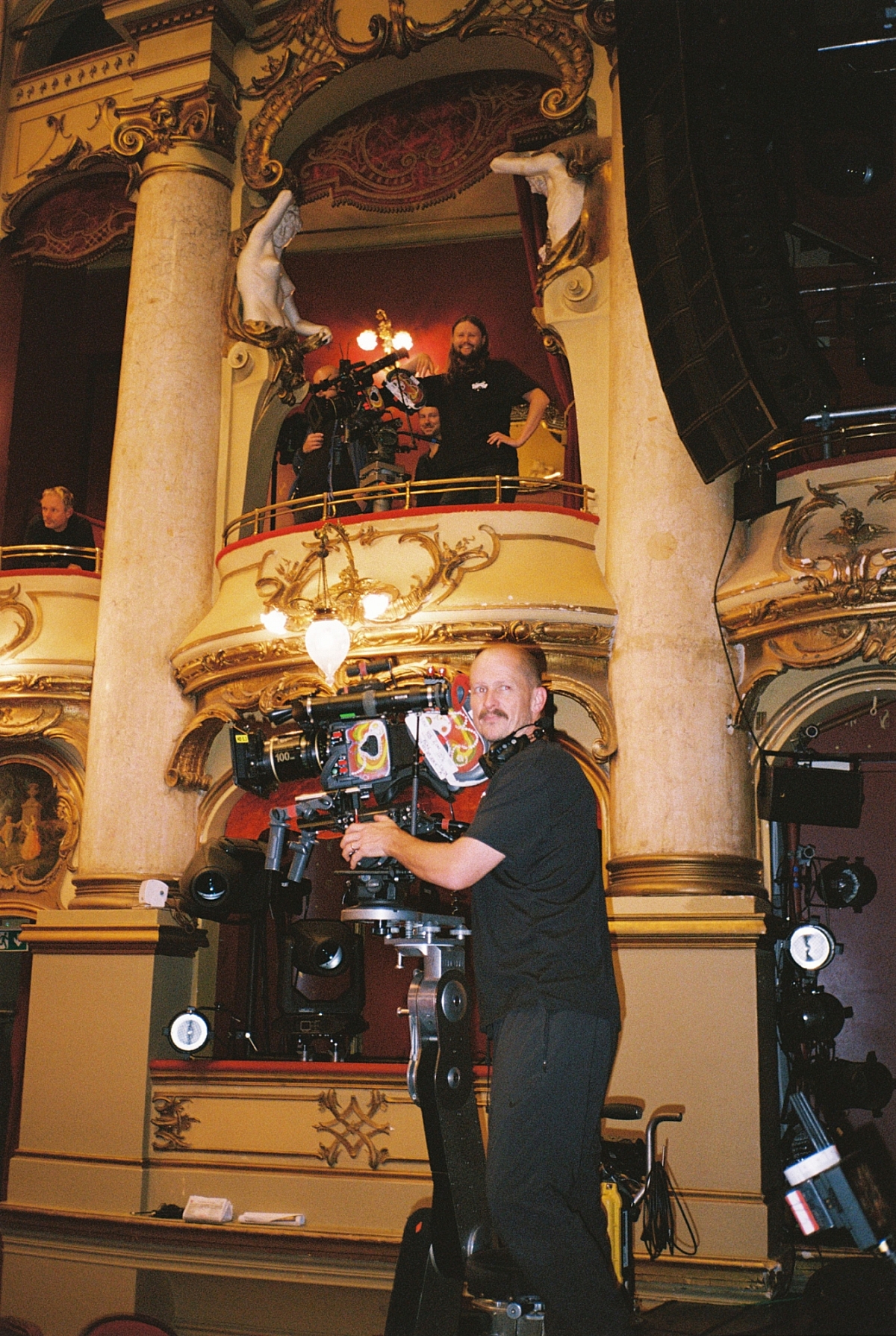
DP Kasper Tuxen DFF at the 35mm film camera, emblazoned with a special psychedelic design, plus additional cinematographer Pål Ulvik Rokseth shooting Joachim Trier's SENTIMENTAL VALUE. Photo by Mats Høiby.
Sentimental Value was mainly a single-camera shoot with Tuxen operating, assisted during the Scandinavian stints by Ola Austad and Robin Grading Ottersen as 1st and 2nd ACs respectively. Pål Ulvik Rokseth and Eirik Holst Aagård variously operated B-camera, with Anders Holck Petersen on Steadicam, and Mats Høiby working as the clapper/loader. The grip team was headed by Christian Scheibe. Levi Gawrock Trøite was the gaffer, supported by best girl Lisa Emilie Øverjordet.
During the French leg of the shoot in Deauville, the 1st and 2nd ACs were Vincent Toubel and Adrien Levy-Charles, with Loïc Andrieu operating Steadicam, Vincent Le Borgne the gaffer and Lucas Schwartz the best boy.
"All of my crew were brilliantly-organised, and took real pride in their work," Tuxen recalls. "We were rarely at the same location for more than two days in-a-row, and they made things flow smoothly between and during the many different set-ups.
"We used more handheld in this film, especially for the contemporary scenes, but it was never anything frenetic or crazy because of the nature of the emotional moments. I fell in love with the Butt Dolly, basically a barstool on wheels, that let me swivel, crab, push or pull myself along, and helped take any grittiness out of the movement.
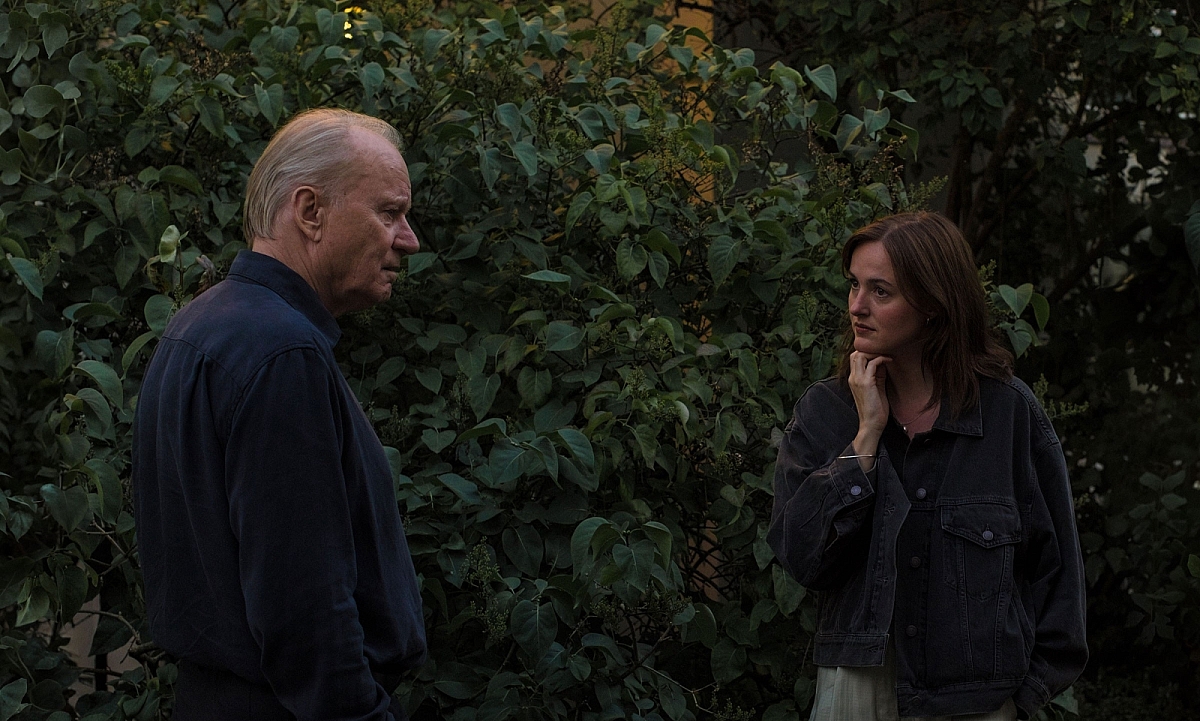
Renate Reinsve (Nora) and Stellan Skarsgård (Gustav) in Joachim Trier's SENTIMENTAL VALUE. Photo courtesy of Christian Belgaux.
"My instinct when shooting handheld is always to lock into the actors and respond to their performances with small adjustments to the framing, trying to see faces from a slightly-altered angles, or pushing-in imperceptibly. Being emotionally-attached like that is a joy to me.”
For the long oner at the end of the movie, Tuxen switched to operating on a traditional Peewee dolly, with key grip Christian Scheibe doing the manoeuvres. "Christian was a master when it came that final shot, coordinating very complex choreography of doors opening and closing as the camera moved around the house in-sync with Renata. It was truly classic cinema."
Lighting exterior night scenes is always a challenge for cinematographers, and Tuxen faced the task of illuminating a wide stretch of the beach at Deauville for the scene between Gustav and Rachel which takes place between dusk, night and early morning.
"It was the largest area I've ever had to film," he remarks. "When you're striving for authenticity, it's hard to make something like that look natural, and it's even more difficult when you want to infuse it with a certain filmic charm and nostalgia.
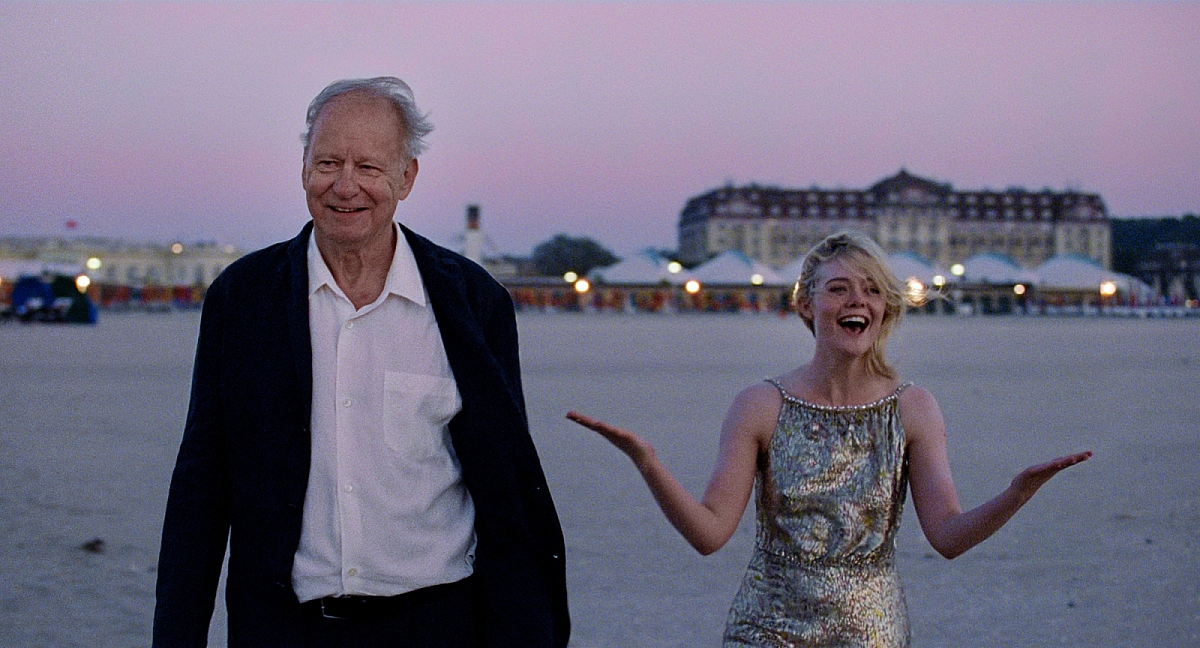
Stellan Skarsgård (Gustav) and Elle Fanning (Rachel) on Deauville Beach in Joachim Trier's SENTIMENTAL VALUE. Photo courtesy of Kasper Tuxen DFF.
"I didn't want to make this scene look like it was shot in typical Hollywood-style moonlight, but to capture the sense that it was happening during the film festival. So we decided to strengthen the existing background lighting along the boardwalk using Astera AX10 LED spotlights in-camera and employ an old technique of multiplying sources with tight and precise beams to create pools and wide washes of light.
"To give me enough exposure to shoot on 500T, I used around 40 Astera AX10s along the promenade, and could dim them appropriately up or down so they mixed-in well with the exiting practical lights. We also used Creamsoure Vortex and Nanlux Evoke 2400B fixtures off-camera to throw illumination on to the sand and create the effect of the light coming from the town. Getting to the right look was a real challenge, and the set-up was pretty hefty, but Joachim and I were really pleased with how it turned out.”
Looking back on his experience of shooting Sentimental Value, Tuxen concludes, "Film combines soul with science, and it was great to shoot analog again to create different and distinctive looks throughout the movie.
"It was also great to reunite with Joachim. He's a very kind and considerate person by nature, and he loves people. This was the longest production in my career so far, and if I had ever had the blues about missing my family, he would take time to sit with me and just be my friend. I think that kind of pure, human connection reflects in this film.”